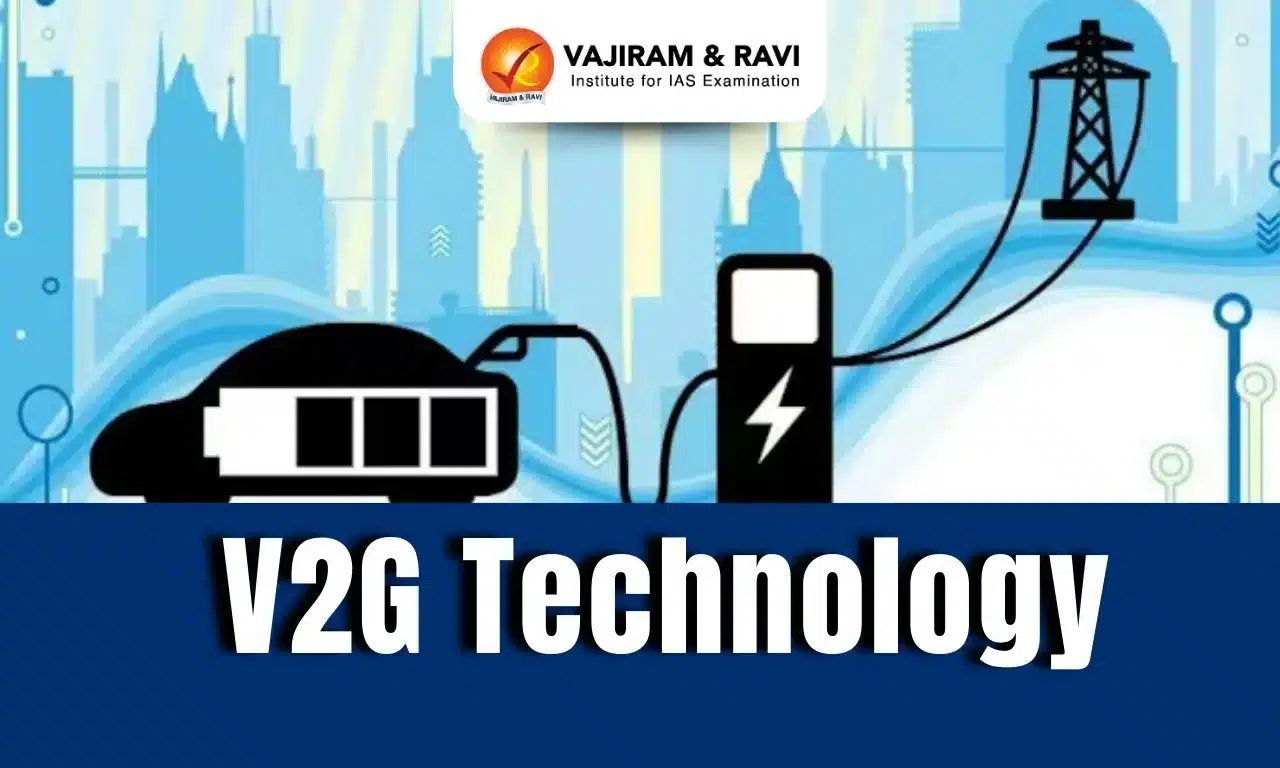Vehicle-to-Grid (V2G) Technology Latest News
Recently, the Kerala State Electricity Board (KSEB), in partnership with IIT Bombay, has launched a pilot V2G project to test its feasibility in the state.
What is Vehicle-to-Grid (V2G) Technology?
- Vehicle-to-Grid (V2G) is a set of technologies that enable Electric Vehicles (EVs) to send stored electricity back to the power grid when they are not in use.
- When an EV is idle and connected via a bi-directional charger, it can act as a decentralised battery energy storage system, contributing electricity to the grid.
- V2G supports both charging (Grid to Vehicle – G2V) and discharging (Vehicle to Grid – V2G) of EV batteries, creating a two-way energy flow.
- EV batteries act as a load on the grid during charging, which can be managed using tools like Time of Use (ToU) tariffs and smart charging to reduce stress during peak hours.
- During discharging, EV batteries serve as distributed energy sources, providing electricity during peak demand periods or when renewable energy (RE) is low.
- V2G is part of a broader framework including Vehicle to Home (V2H) and Vehicle to Vehicle (V2V) applications, but V2G is the most widely explored use case globally.
Source: TH
Last updated on November, 2025
→ Check out the latest UPSC Syllabus 2026 here.
→ Join Vajiram & Ravi’s Interview Guidance Programme for expert help to crack your final UPSC stage.
→ UPSC Mains Result 2025 is now out.
→ UPSC Notification 2026 is scheduled to be released on January 14, 2026.
→ UPSC Calendar 2026 is released on 15th May, 2025.
→ The UPSC Vacancy 2025 were released 1129, out of which 979 were for UPSC CSE and remaining 150 are for UPSC IFoS.
→ UPSC Prelims 2026 will be conducted on 24th May, 2026 & UPSC Mains 2026 will be conducted on 21st August 2026.
→ The UPSC Selection Process is of 3 stages-Prelims, Mains and Interview.
→ UPSC Result 2024 is released with latest UPSC Marksheet 2024. Check Now!
→ UPSC Prelims Result 2025 is out now for the CSE held on 25 May 2025.
→ UPSC Toppers List 2024 is released now. Shakti Dubey is UPSC AIR 1 2024 Topper.
→ UPSC Prelims Question Paper 2025 and Unofficial Prelims Answer Key 2025 are available now.
→ UPSC Mains Question Paper 2025 is out for Essay, GS 1, 2, 3 & GS 4.
→ UPSC Mains Indian Language Question Paper 2025 is now out.
→ UPSC Mains Optional Question Paper 2025 is now out.
→ Also check Best IAS Coaching in Delhi
Vehicle-to-Grid (V2G) Technology FAQs
Q1. What is V2G Technology?+
Q2. How does V2G Technology benefit the power grid?+
Q3. Why is V2G important for renewable energy integration?+
Tags: prelims pointers upsc prelims current affairs vehicle to grid technology

















